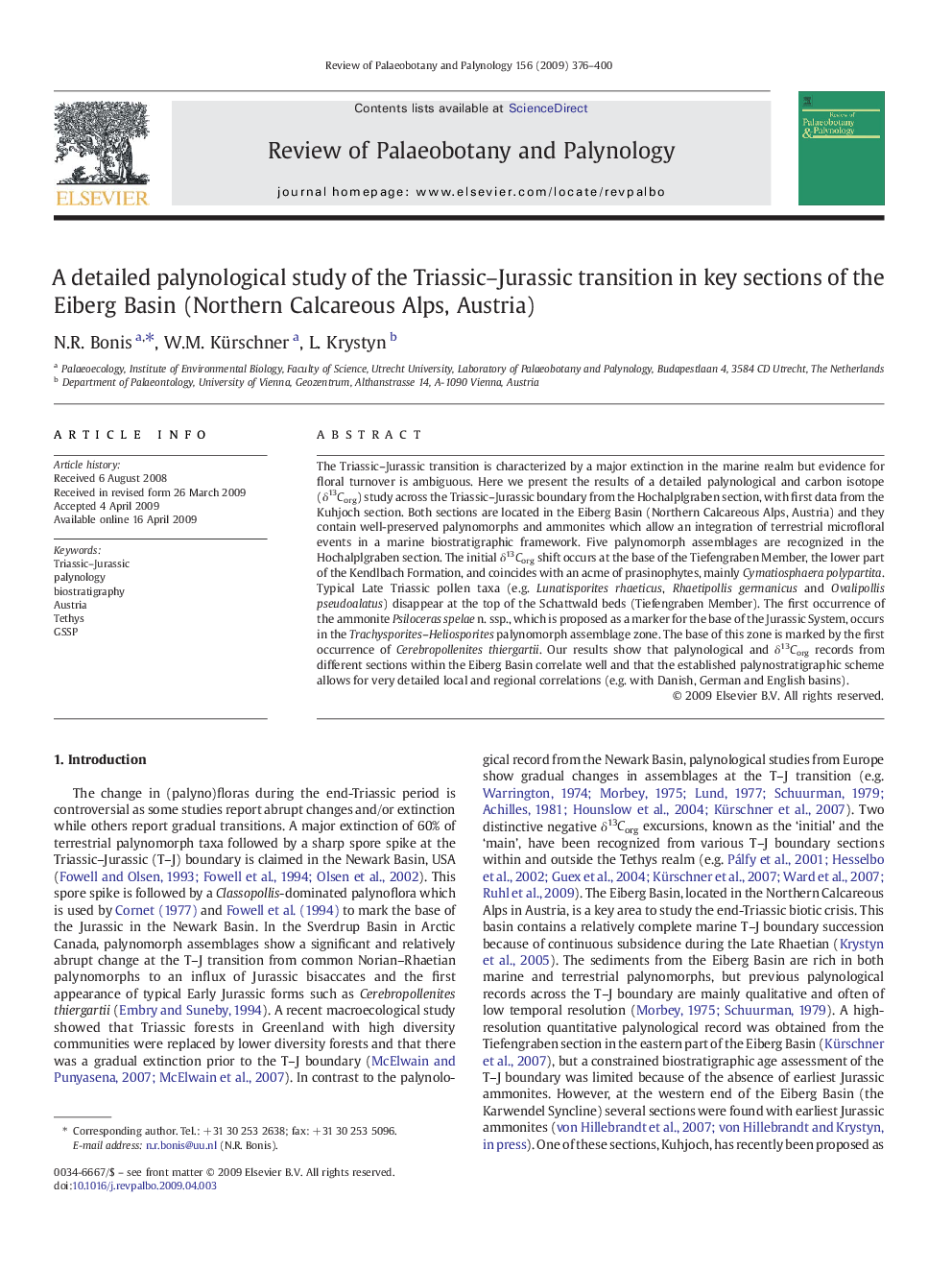| Article ID | Journal | Published Year | Pages | File Type |
|---|---|---|---|---|
| 4750791 | Review of Palaeobotany and Palynology | 2009 | 21 Pages |
Abstract
The Triassic-Jurassic transition is characterized by a major extinction in the marine realm but evidence for floral turnover is ambiguous. Here we present the results of a detailed palynological and carbon isotope (δ13Corg) study across the Triassic-Jurassic boundary from the Hochalplgraben section, with first data from the Kuhjoch section. Both sections are located in the Eiberg Basin (Northern Calcareous Alps, Austria) and they contain well-preserved palynomorphs and ammonites which allow an integration of terrestrial microfloral events in a marine biostratigraphic framework. Five palynomorph assemblages are recognized in the Hochalplgraben section. The initial δ13Corg shift occurs at the base of the Tiefengraben Member, the lower part of the Kendlbach Formation, and coincides with an acme of prasinophytes, mainly Cymatiosphaera polypartita. Typical Late Triassic pollen taxa (e.g. Lunatisporites rhaeticus, Rhaetipollis germanicus and Ovalipollis pseudoalatus) disappear at the top of the Schattwald beds (Tiefengraben Member). The first occurrence of the ammonite Psiloceras spelae n. ssp., which is proposed as a marker for the base of the Jurassic System, occurs in the Trachysporites-Heliosporites palynomorph assemblage zone. The base of this zone is marked by the first occurrence of Cerebropollenites thiergartii. Our results show that palynological and δ13Corg records from different sections within the Eiberg Basin correlate well and that the established palynostratigraphic scheme allows for very detailed local and regional correlations (e.g. with Danish, German and English basins).
Related Topics
Physical Sciences and Engineering
Earth and Planetary Sciences
Palaeontology
Authors
N.R. Bonis, W.M. Kürschner, L. Krystyn,
